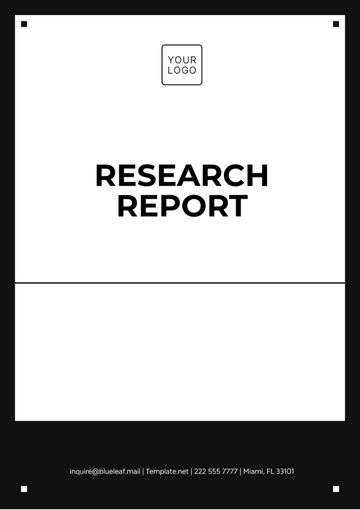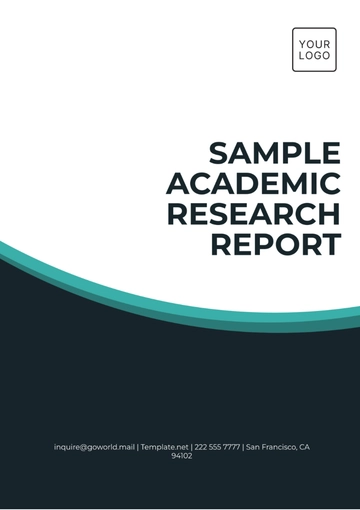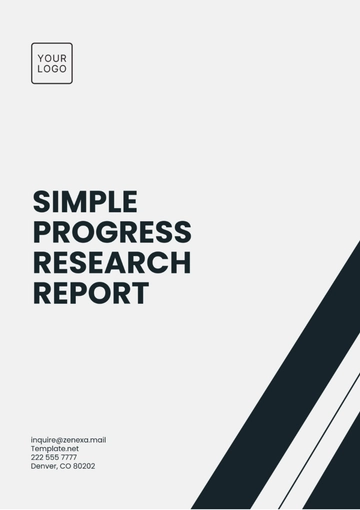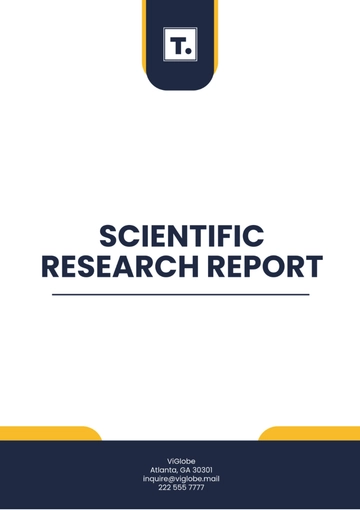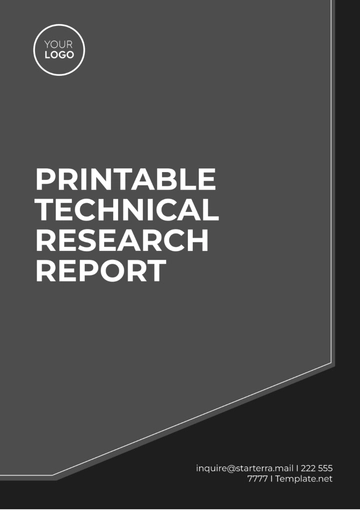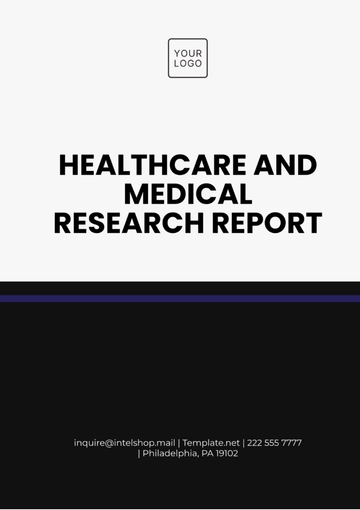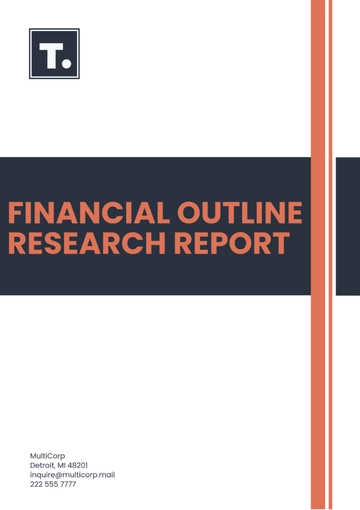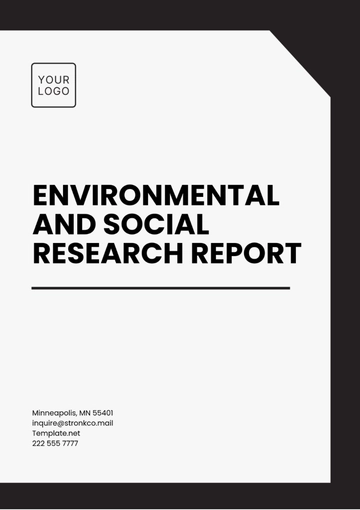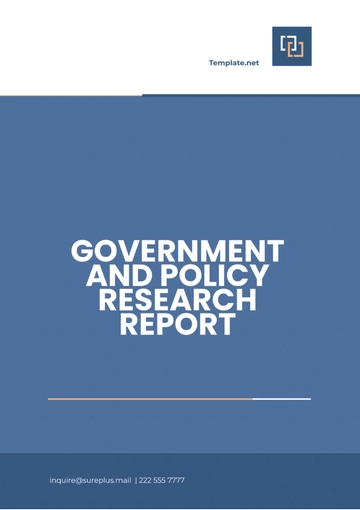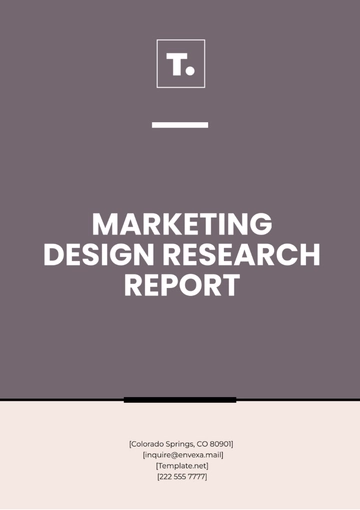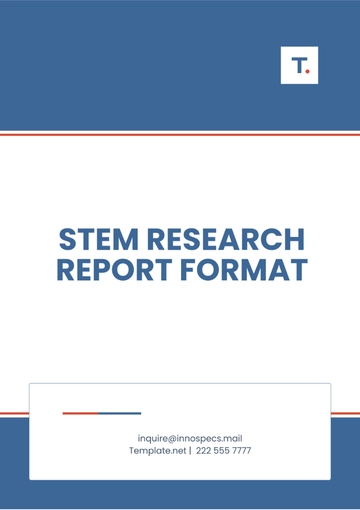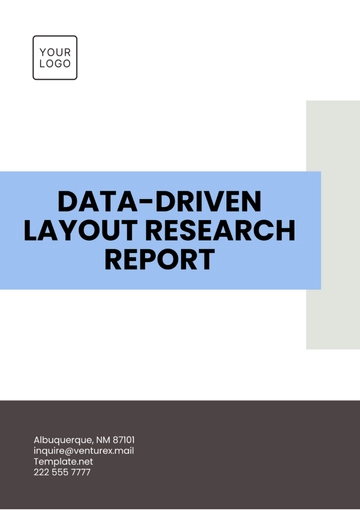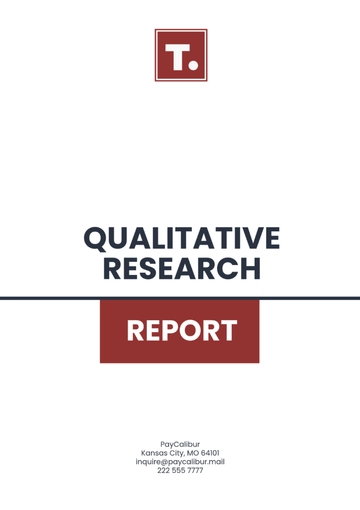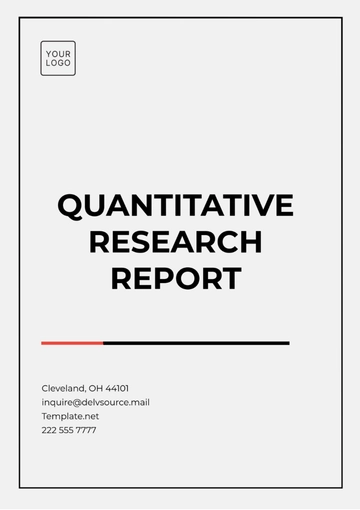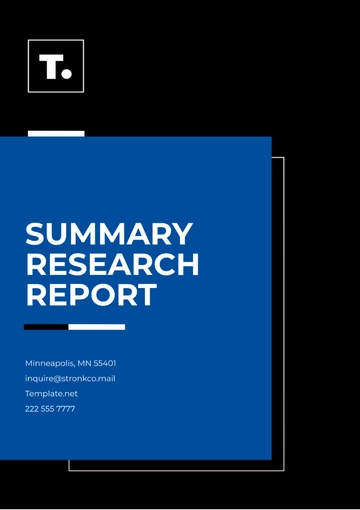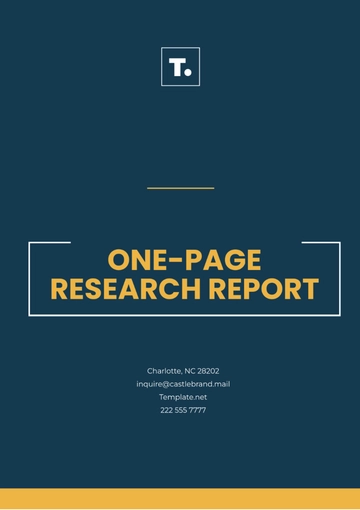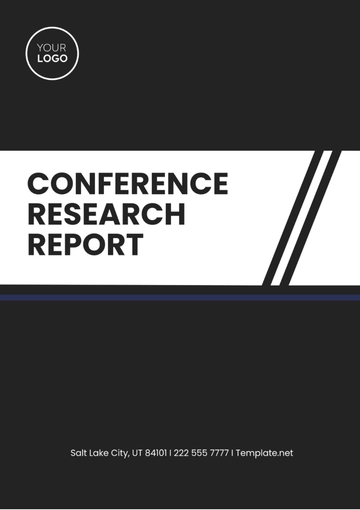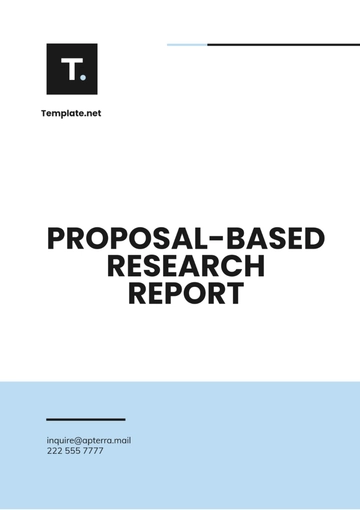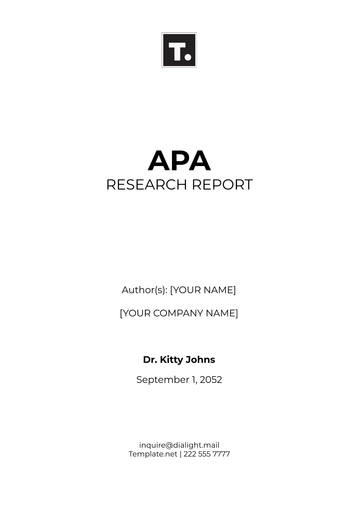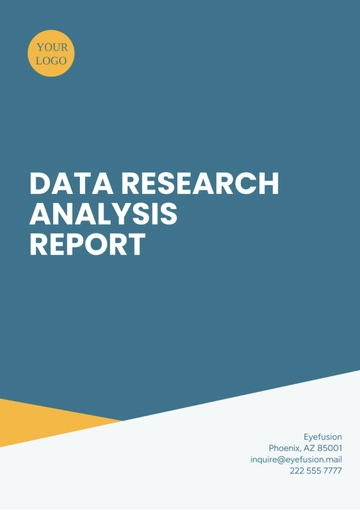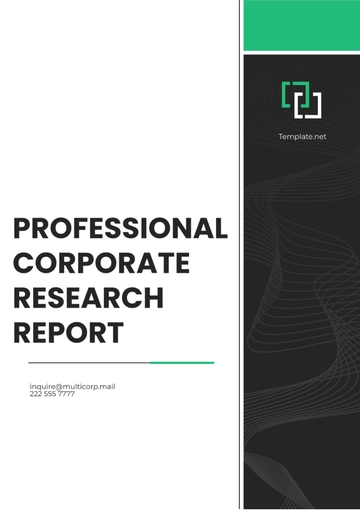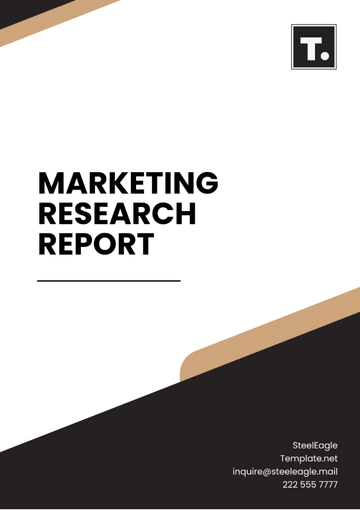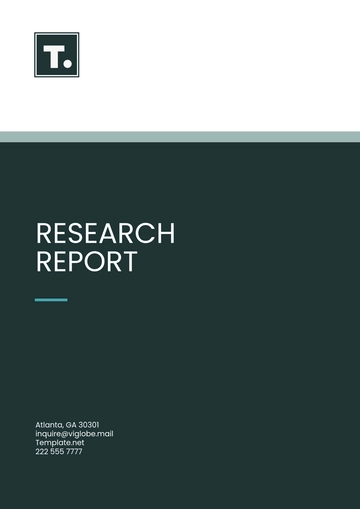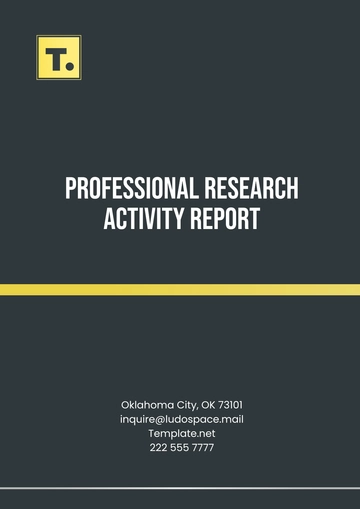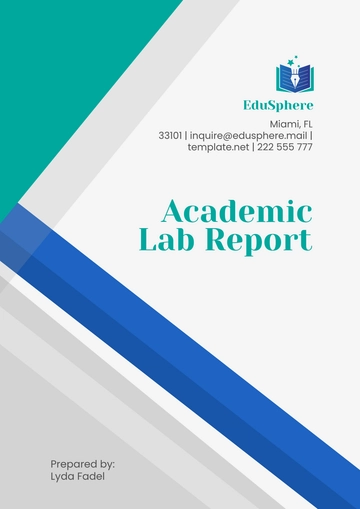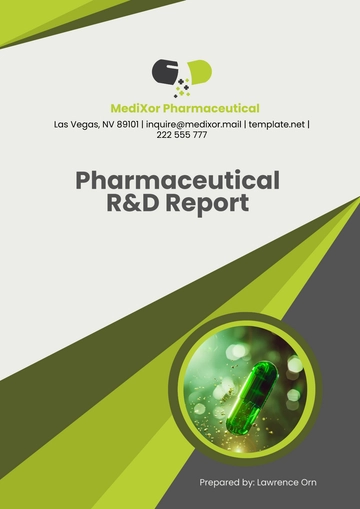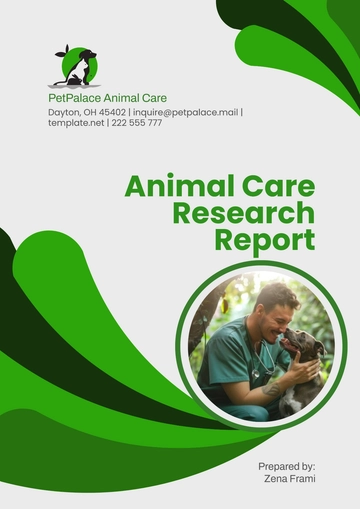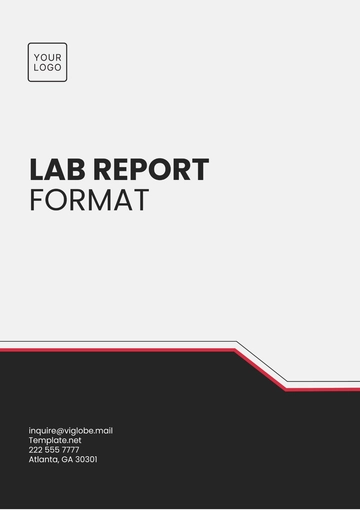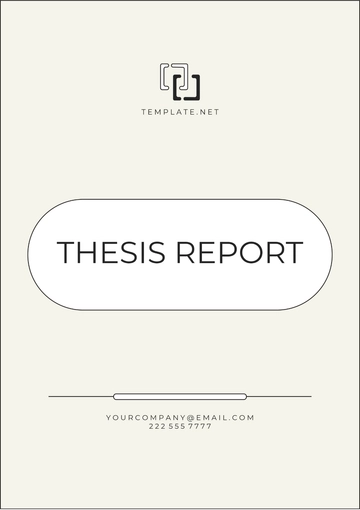Free Printable Technical Research Report
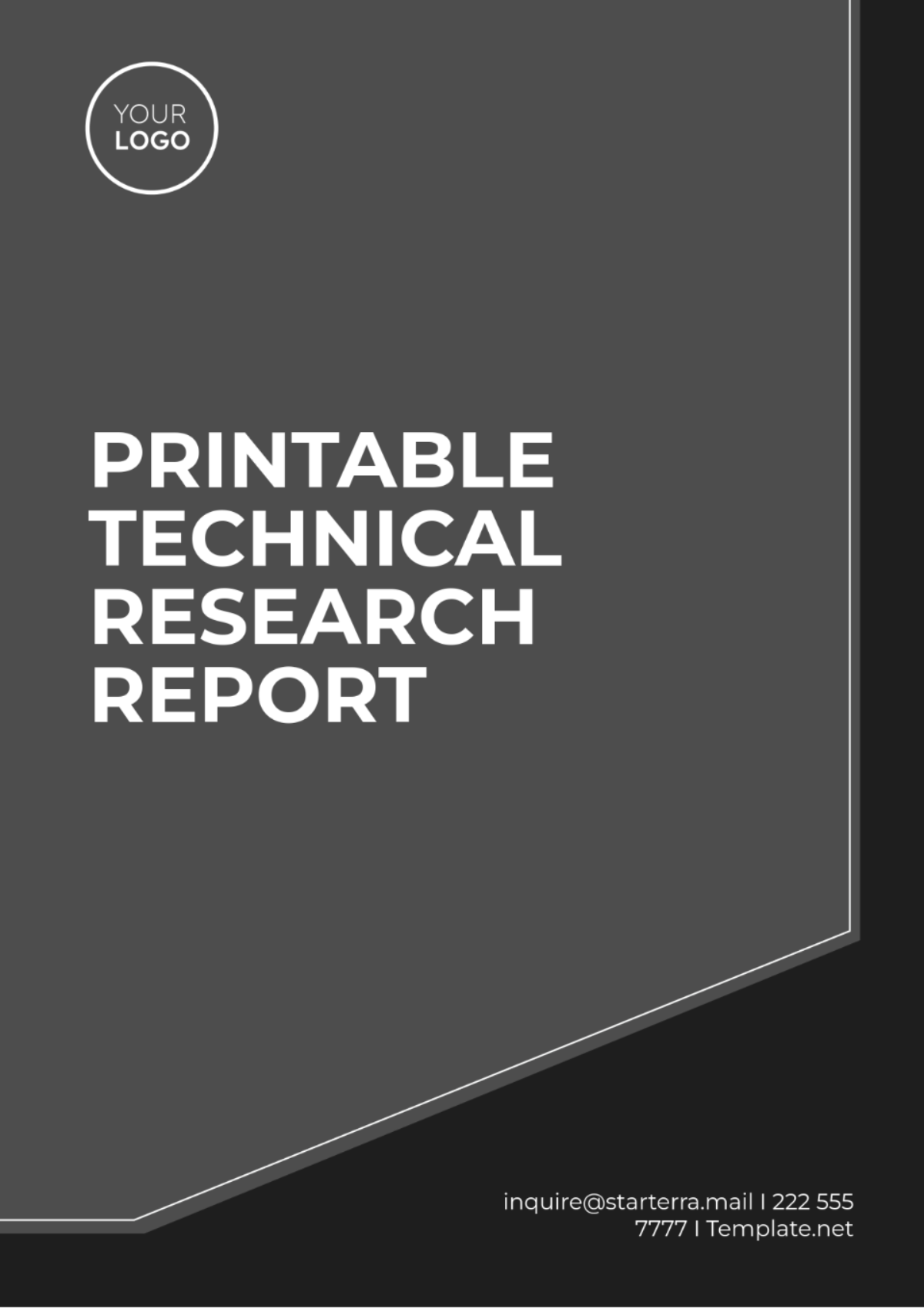
Title of the Report | Advancements in Smart Agriculture Technologies |
|---|---|
Author | [Your Name] |
Date | January 15, 2070 |
I. Abstract
This research report examines advancements in smart agriculture technologies, focusing on precision farming and the integration of IoT (Internet of Things) devices. The study aims to assess the effectiveness of these innovations in increasing crop yields and optimizing resource usage. Key findings indicate that the adoption of smart sensors and data analytics can enhance productivity by up to 25%. This report also discusses the implications of these technologies for sustainable farming practices and food security.
II. Introduction
The introduction provides an overview of the challenges faced by the agricultural sector, including climate change, resource depletion, and the need to feed a growing global population. As traditional farming methods become less effective, smart agriculture technologies offer promising solutions. This study addresses the following questions:
What are the latest advancements in smart agriculture technologies?
How can these advancements be effectively implemented in current farming practices? The objectives of the research include identifying key innovations and analyzing their potential impact on agricultural productivity and sustainability.
III. Methodology
This study employs a mixed-methods approach, combining quantitative and qualitative research techniques. The methodology includes:
Data Collection: Surveys were distributed to farmers and agricultural experts, along with field trials conducted on smart farms in various regions.
Sample Selection: A stratified random sample of 100 farmers and 10 agricultural technology installations.
Analytical Techniques: Statistical analysis of survey results using SPSS software, along with qualitative analysis of interview data to identify common themes and insights.
IV. Results
Quantitative Data:
Year | Traditional Farming Yield (tons/acre) | Smart Farming Yield (tons/acre) |
|---|---|---|
2065 | 2.5 | 2.5 |
2066 | 2.7 | 3.0 |
2067 | 2.8 | 3.5 |
2068 | 2.9 | 4.0 |
2069 | 3.0 | 4.5 |
Figure 1: Yield Trends Over the Past Five Years
Description: This illustrates the increase in average crop yields from 2065 to 2069 for both traditional and smart farming methods.
Outcome | Traditional Farming | Smart Farming | Percentage Improvement |
|---|---|---|---|
Average Yield (tons/acre) | 3.0 | 4.5 | 50% |
Water Usage (gallons/acre) | 800 | 560 | 30% |
Fertilizer Costs ($/acre) | $300 | $255 | 15% |
Labor Costs ($/acre) | $150 | $120 | 20% |
Table 1: Comparison of Traditional vs. Smart Farming Outcomes
V. Discussion
In this section, the findings are interpreted about existing literature and practical applications. The discussion highlights:
Significance of Smart Technologies: Smart technologies enhance agricultural resilience and productivity. Precision farming optimizes inputs like water and fertilizers, increasing crop yields and minimizing environmental impact while supporting sustainable practices.
Comparison with Previous Studies: Our findings align with previous research showing that farmers using smart technologies achieve notable efficiency and yield improvements, highlighting their advantages over traditional methods.
Limitations of the Research: Adoption rates vary by region, impacting overall technology effectiveness. Initial implementation costs may deter smaller operations, necessitating strategies to encourage wider adoption.
Suggestions for Future Research: Future studies should evaluate the long-term economic impacts of smart agriculture technologies and conduct cost-benefit analyses. Additionally, strategies for technology transfer and farmer education will be essential for maximizing benefits.
VI. Conclusion
This report highlights the importance of investing in smart agriculture technologies to boost productivity and sustainability. Key recommendations include:
Increased Funding for R&D: More resources should be allocated to research and development in agricultural technology to foster innovation and create effective tools for farmers.
Government Incentives: Governments should offer incentives to encourage farmers to adopt smart practices, helping reduce barriers for small and medium-sized enterprises.
Collaboration Among Stakeholders: Strengthening partnerships between technology providers and agricultural stakeholders is essential for developing tailored solutions that enhance productivity and sustainability.
By implementing these recommendations, the agricultural sector can fully leverage smart technologies for a more resilient and productive future.
VII. References
Doe, J., & Smith, J. (2069). Innovations in Smart Agriculture: Trends and Impacts. Journal of Agricultural Research, 15(4), 123-145.
Green, L. (2068). The Future of Farming: Precision Agriculture and Sustainability. Agricultural Science Review, 7(1), 56-78.
Food and Agriculture Organization. (2069). Global Agricultural Technology Report 2069. Retrieved from [FAO website link].
VIII. Appendices
Appendix A: Survey questionnaire used for data collection.
Appendix B: Detailed statistical analysis results.
Appendix C: Additional charts and graphs supporting the research findings.
- 100% Customizable, free editor
- Access 1 Million+ Templates, photo’s & graphics
- Download or share as a template
- Click and replace photos, graphics, text, backgrounds
- Resize, crop, AI write & more
- Access advanced editor
Template.net's Printable Technical Research Report Template combines precision with functionality for technical research needs. This editable and customizable template includes sections for technical summaries, data analysis, and project results, making it ideal for engineers and scientists. A professional layout designed for print ensures clarity and comprehensive documentation. Editable in our Ai Editor Tool, this template is perfect for communicating technical details
You may also like
- Sales Report
- Daily Report
- Project Report
- Business Report
- Weekly Report
- Incident Report
- Annual Report
- Report Layout
- Report Design
- Progress Report
- Marketing Report
- Company Report
- Monthly Report
- Audit Report
- Status Report
- School Report
- Reports Hr
- Management Report
- Project Status Report
- Handover Report
- Health And Safety Report
- Restaurant Report
- Construction Report
- Research Report
- Evaluation Report
- Investigation Report
- Employee Report
- Advertising Report
- Weekly Status Report
- Project Management Report
- Finance Report
- Service Report
- Technical Report
- Meeting Report
- Quarterly Report
- Inspection Report
- Medical Report
- Test Report
- Summary Report
- Inventory Report
- Valuation Report
- Operations Report
- Payroll Report
- Training Report
- Job Report
- Case Report
- Performance Report
- Board Report
- Internal Audit Report
- Student Report
- Monthly Management Report
- Small Business Report
- Accident Report
- Call Center Report
- Activity Report
- IT and Software Report
- Internship Report
- Visit Report
- Product Report
- Book Report
- Property Report
- Recruitment Report
- University Report
- Event Report
- SEO Report
- Conference Report
- Narrative Report
- Nursing Home Report
- Preschool Report
- Call Report
- Customer Report
- Employee Incident Report
- Accomplishment Report
- Social Media Report
- Work From Home Report
- Security Report
- Damage Report
- Quality Report
- Internal Report
- Nurse Report
- Real Estate Report
- Hotel Report
- Equipment Report
- Credit Report
- Field Report
- Non Profit Report
- Maintenance Report
- News Report
- Survey Report
- Executive Report
- Law Firm Report
- Advertising Agency Report
- Interior Design Report
- Travel Agency Report
- Stock Report
- Salon Report
- Bug Report
- Workplace Report
- Action Report
- Investor Report
- Cleaning Services Report
- Consulting Report
- Freelancer Report
- Site Visit Report
- Trip Report
- Classroom Observation Report
- Vehicle Report
- Final Report
- Software Report
